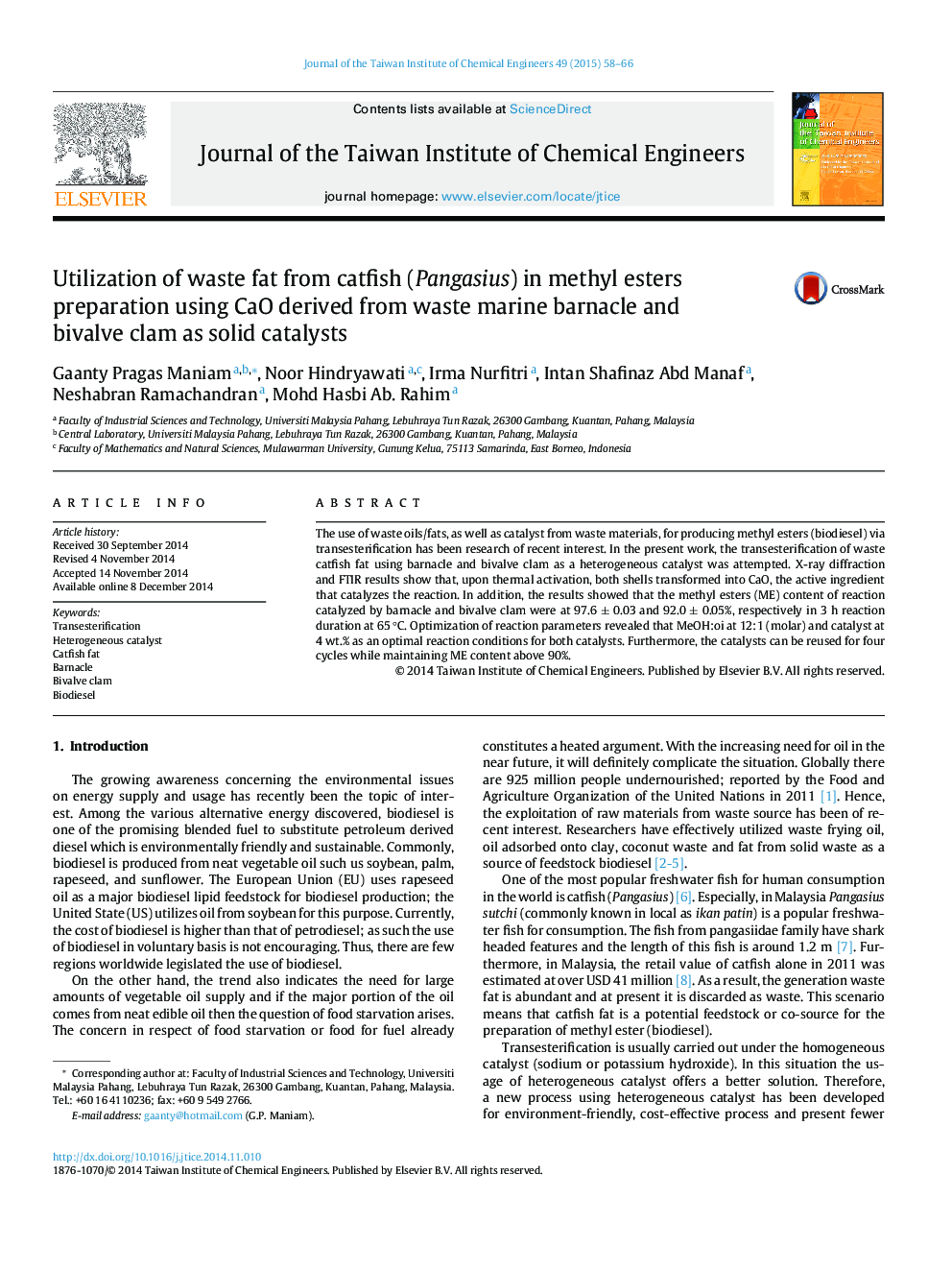| Article ID | Journal | Published Year | Pages | File Type |
|---|---|---|---|---|
| 691182 | Journal of the Taiwan Institute of Chemical Engineers | 2015 | 9 Pages |
•Waste fat of catfish is used as a potential waste feedstock for biodiesel production.•Barnacle and baby clam shell were successfully used as catalysts in producing methyl esters.•The catalysts can be reused for six cycles while maintaining methyl esters content at 96.6%.
The use of waste oils/fats, as well as catalyst from waste materials, for producing methyl esters (biodiesel) via transesterification has been research of recent interest. In the present work, the transesterification of waste catfish fat using barnacle and bivalve clam as a heterogeneous catalyst was attempted. X-ray diffraction and FTIR results show that, upon thermal activation, both shells transformed into CaO, the active ingredient that catalyzes the reaction. In addition, the results showed that the methyl esters (ME) content of reaction catalyzed by barnacle and bivalve clam were at 97.6 ± 0.03 and 92.0 ± 0.05%, respectively in 3 h reaction duration at 65 °C. Optimization of reaction parameters revealed that MeOH:oi at 12:1 (molar) and catalyst at 4 wt.% as an optimal reaction conditions for both catalysts. Furthermore, the catalysts can be reused for four cycles while maintaining ME content above 90%.
